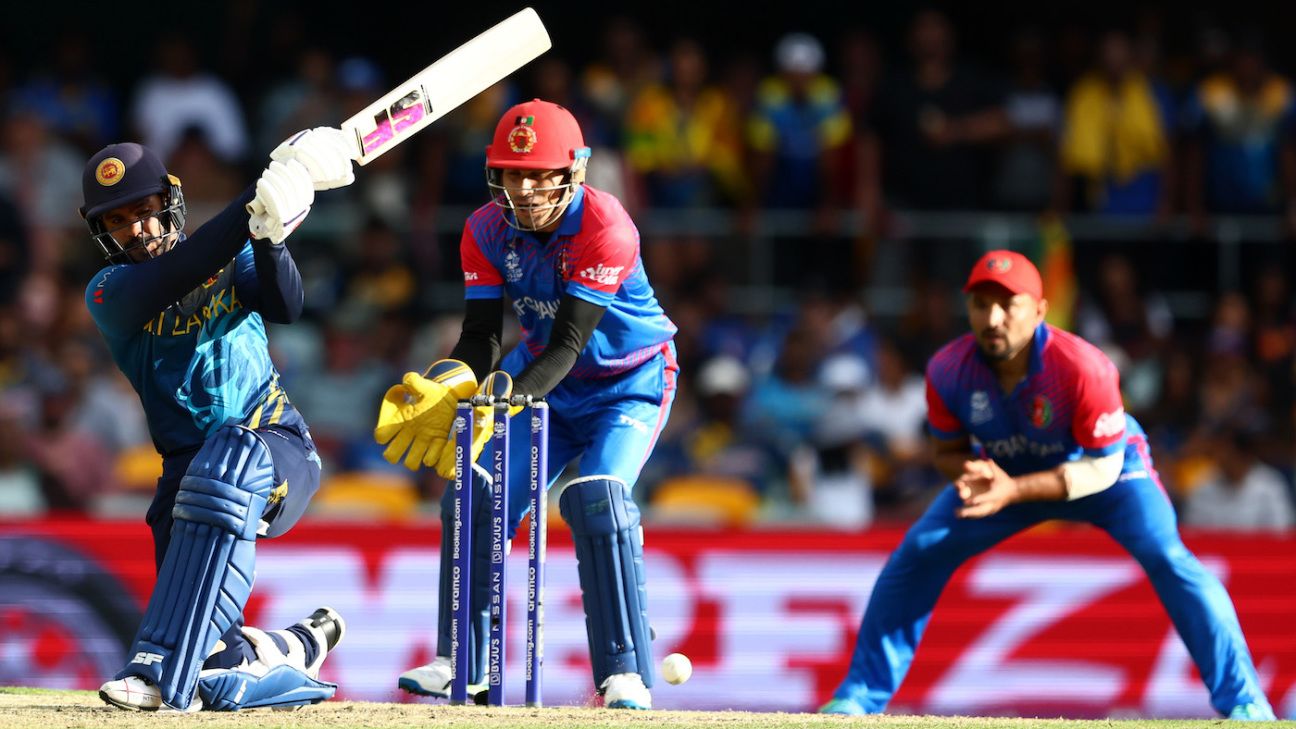
"The plan was, even if we got less runs - somewhere around 25 to 30 in the first six overs - not to panic, and to keep wickets in hand."
"We've been talking about losing less wickets during the powerplay as well as the first ten overs," Nawaz said after the match. "If you look at the pattern that's building in most teams, the number of runs that you get in the first ten overs has been far less than in the subcontinent. And the number of runs you get at the bottom end has been quite a bit.
"That's been our plan during this World Cup. Whenever we had a good opening stand, or someone taking responsibility from the top, we've done well."
Against Afghanistan, Sri Lanka were especially wary of losing wickets to Mujeeb Ur Rahman. He dismissed Pathum Nissanka with a near-unplayable delivery, but Sri Lanka were clearly happy to play him out and wait for easier overs down the line. Mujeeb took 1 for 11 in his three powerplay overs, but his last over went for 13 runs.
"We knew that Mujeeb's going to bowl at least two overs in the powerplay," Nawaz said. "So the plan was, even if we got less runs - somewhere around 25 to 30 in the first six overs - not to panic, and to keep wickets in hand. Once their main bowlers were bowled out, there were many bowlers we were thinking were gettable. We knew we were chasing 140, which is not a big total, and we could always get there."
De Silva, who guided Sri Lanka through the chase with his 66 not out off 42, made his first half-century of the tournament. In fact, it was his third T20I fifty, despite his having batted mostly in the top four (23 previous innings). De Silva is in the team because of what he adds with the ball, as well as in the field. But Sri Lanka hope this was a breakthrough innings. It was his highest score in this format.
"Yes, I think it's a relief that Dhananjaya is coming into runs," Nawaz said. "He's always shown potential, hitting 30s, 40s, and 20s all the time. But I think it's good to see him finishing a game and coming through that game, 60-plus not out."















 Phone: (800) 737. 6040
Phone: (800) 737. 6040 Fax: (800) 825 5558
Fax: (800) 825 5558 Website:
Website:  Email:
Email: 






